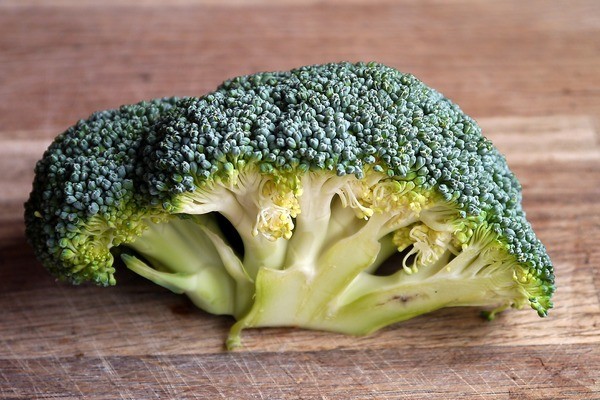
Advertisements
Achy joints, grinding pain, misshapen fingers – all of these are types of arthritis pain. Arthritis is a catch-all term for joint pain or joint disease. There are more than 100 different types and is the leading cause of disability in Americans.
If you have arthritis, you know how painful even mild cases can be. Since arthritis involves chronic inflammation, you are at risk for heart disease and other diseases triggered by inflammation.
There are four basic categories of arthritis, including degenerative (osteoarthritis), inflammatory (rheumatoid arthritis), infectious (from an infection), and metabolic (gout). All of these respond, at least in part, to an anti-inflammatory diet.
You’ll love the foods on this list. In fact, you may even opt for these foods if you don’t have arthritis!
7. Vitamin C Rich Foods

Love oranges? You’re in luck. Vitamin C slows progression of osteoarthritis. Get your Vitamin C from oranges, strawberries, pineapple, cantaloupe, broccoli, tomatoes, and bell peppers. Eat these raw, or as appropriate roasted or lightly steamed.
Try not to take supplements because too much Vitamin C can lead to kidney stones. Eating it is easier for your body to take what it needs and eliminate the rest. Vitamin C removes free radicals, lessening arthritis risk. It also helps repair bones, cartilage and other skeletal components.
6. Anthocyanins

Anthocyanins are antioxidants found in dark red or purple fruits and vegetables. Antioxidants remove free radicals. If you have gout or osteoarthritis, try eating tart cherries or drinking unsweetened tart cherry juice.
Anthocyanins also have anti-inflammatory, anti-viral, and anti-cancer properties. They’ve been shown to help heart disease, obesity and to ward off urinary tract infections. You can’t go wrong snacking on dark red or purple fruits and vegetables.
Plus, they are delicious in the form of strawberries, raspberries, blueberries, grapes and blackberries.
5. Omega-3 Rich Foods

Omega-3 fatty acids are healthy fats. Your body needs them for practically everything from improving your eye sight to boosting energy to fighting aging. Omega-3s are linked to improvements in rheumatoid and osteoarthritis.
The simplest way to get omega-3s is to eat fatty fish. Salmon, tuna, mackerel, and other similar ocean fish are full of fatty acids.
If you can’t stand fish, chia seeds, walnuts, omega-3 rich eggs, and nuts are great sources.
Advertisements
Change your cooking oils to extra virgin olive oil, avocado oil and walnut oil.
4. Turmeric

If you love Indian food, you are in luck. Turmeric is a commonly used spice that adds yellow color and tang to foods like curries. Tumeric is high in curcumin, an antioxidant and anti-inflammatory. It has a long history in folk medicine for warding off inflammatory diseases and now has research to back up the claims.
Add turmeric, eat curries and consider adding a supplement. The supplement is the fastest way to get the most benefit. Also add black pepper to your diet to increase absorption of curcumin.
3. Vitamin D and Calcium

Since arthritis is a bone disease, you need to support healthy bones. You need both Vitamin D and calcium. The fastest way to get both is through dairy products. Choose low fat versions and replace regular yogurt with Greek yogurt for greatest effect. Just make sure to get dairy with the lowest sugar and fats.
Other sources include leafy green vegetables like spinach, kale and broccoli. As a side benefit, broccoli contains sulforaphane, a compound that slows cartilage damage. Eat veggies raw, roasted or lightly steamed.
2. Green Tea

Drink away arthritis pain and cartilage destruction with green tea. Green tea contains polyphenols, antioxidants that reduce both cartilage damage and inflammation. It also contains epigallocatechin-3-gallate, an antioxidant that blocks production of certain molecules that worsen rheumatoid arthritis.
Green tea has positive effects on preventing cancer, melting belly fat, helping hangovers, and lessening depression, among many other benefits. It is worth adding a nice hot cup a green tea to your daily routine. Don’t ruin the health effects by adding sugars or artificial sweeteners.
1. Fiber

Fiber lowers C-reactive protein (CRP). This protein is a marker used by doctors to help diagnose heart disease, diabetes, and certain types of arthritis. Adding fiber to your diet is extremely important on many levels.
Add chia seeds, whole grains (not wheat) breads, oatmeal, brown or wild rice (not white), and red, kidney or pinto beans to your diet. As a side benefit, you’ll get folic acid and some trace elements important for good health.
Conclusion

Advertisements
Normal wear and tear, aging, inflammatory foods, and some infections can lead to arthritis. To help yourself lessen arthritis symptoms and improve your heart health, lessen diabetes risk, and decrease cancer risks, eat an anti-inflammatory diet.
Avoid processed meats and other foods, sugar and artificial sweeteners, trans fats (hydrogenated oils), and white bread/pasta/rice. Choose the healthiest carbs and limit intake. It does take a bit of effort. Start slowly. Eliminate one category of unhealthy food and add in one of the foods listed above. Once that food is firmly in your diet, replace another. It can be done! And you will feel much better.





Comments